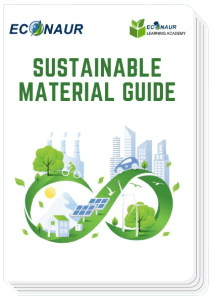Urban Heat Island Effect and how to mitigate their effects!
“Urban heat islands” occur when cities replace natural land cover with dense concentrations of pavement, buildings, and other surfaces that absorb and retain heat. This effect increases energy costs (e.g., for air conditioning), air pollution levels, and heat-related illness and mortality.

Climate change will likely lead to more frequent, more severe, and longer heat waves during summer months.
- The city of Chicago could see 30 more days per year rise above 100 degrees Fahrenheit (°F) under “high” greenhouse gas emissions scenarios.
- Under lower emissions, Chicago’s new summer heat index could increase to around 93 °F by the end of the century—similar to current summer conditions in Atlanta, Georgia.
City officials worry that intense summer heat could lead to uncomfortable conditions for residents, as well as reduced tourist attraction in summer months.
Extreme heat events often affect our most vulnerable populations first.
Trees, green roofs, and vegetation can help reduce urban heat island effects by shading building surfaces, deflecting radiation from the sun, and releasing moisture into the atmosphere.
Elevated temperatures from heat islands can affect a community’s environment and quality of life in multiple ways.
Increased Energy Consumption
Heat islands increase demand for air conditioning to cool buildings. In an assessment of case studies spanning locations in several countries, electricity demand for air conditioning increased approximately 1–9% for each 2°F increase in temperature. Countries where most buildings have air conditioning, such as the United States, had the highest increase in electricity demand. This increase demand contributes to higher electricity expenses.
Heat islands increase both overall electricity demand, as well as peak energy demand. Peak demand generally occurs on hot summer weekday afternoons, when offices and homes are running air-conditioning systems, lights, and appliances. During extreme heat events, which are exacerbated by heat islands, the increased demand for air conditioning can overload systems and require a utility to institute controlled, rolling brownouts or blackouts to avoid power outages.
Elevated Emissions of Air Pollutants and Greenhouse Gases
As described above, heat islands raise demand for electricity in summer. Companies that supply electricity typically rely on fossil fuel to meet much of this demand, which in turn leads to an increase in air pollutant and greenhouse gas emissions.
These pollutants are harmful to human health and also contribute to complex air quality problems such as the formation of ground-level (smog), fine particulate matter, and acid rain. Increased use of fossil-fuel-powered plants also increases emissions of greenhouse gases, such as carbon dioxide, which contribute to global climate change.
In addition to their impact on energy-related emissions, elevated temperatures can directly increase the rate of ground-level ozone formation. Ground-level ozone is formed when nitrogen oxides and volatile organic compounds react in the presence of sunlight and hot weather. If all other variables are equal, such as the level of precursor emissions in the air and wind speed and direction, more ground-level ozone will form as the environment becomes sunnier and hotter.
Compromised Human Health and Comfort
Heat islands contribute to higher daytime temperatures, reduced nighttime cooling, and higher air pollution levels. These, in turn, contribute to heat-related deaths and heat-related illness such as general discomfort, respiratory difficulties, heat cramps, heat exhaustion, and non-fatal heat stroke.
Heat islands can also exacerbate the impact of naturally occurring heat waves, which are periods of abnormally hot, and often humid, weather. Sensitive populations, such as children, older adults, and those with existing health conditions, are particularly at risk during these events.
Excessive heat events, or abrupt and dramatic temperature increases, are particularly dangerous and can result in above-average rates of mortality. From 2004 to 2018 the Centers for Disease Control and Prevention recorded 10,527 heat-related deaths in the United States, an average of 702 per year. These numbers include deaths where heat was the underlying cause and deaths where heat was a contributing cause.
Impaired Water Quality
High temperatures of pavement and rooftop surfaces can heat up stormwater runoff, which drains into storm sewers and raises water temperatures as it is released into streams, rivers, ponds, and lakes. Water temperature affects all aspects of aquatic life, especially the metabolism and reproduction of many aquatic species. Rapid temperature changes in aquatic ecosystems resulting from warm stormwater runoff can be particularly stressful, and even fatal, to aquatic life.
One study found that urban streams are hotter on average than streams in forested areas, and that temperatures in urban streams rose over 7°F during small storms due to heated runoff from urban materials.
Green infrastructure is one option to cool stormwater runoff and improve water quality. It can include the use of downspout disconnections, rain gardens, planter boxes, bioswales, permeable pavements, green streets and alleys, green parking, and green roofs; as well as land conservation efforts.
To reduce the urban heat island effect:
- Build green infrastructure improvements into regular street upgrades and capital improvement projects to ensure continued investment in heat-reducing practices throughout your community.
- Plant trees and other vegetation—Space in urban areas might be limited, but you can easily integrate small green infrastructure practices into grassy or barren areas, vacant lots, and street rights-of-way.
- City officials in Louisville, Kentucky, recently awarded a $115,700 contract for a tree canopy assessment to help the city use trees to address urban heat, stormwater management, and other concerns. “Knowing where we lack canopy, down to the street and address level, will help our efforts exponentially,” remarked Mayor Greg Fischer.
- Make traditional water quality practices serve double duty by adding trees in or around roadside planters and other green infiltration-based practices to boost roadside cooling and shading.
- Transform your community one project at a time by planting native, drought-tolerant shade trees and smaller plants such as shrubs, grasses, and groundcover wherever possible.
- Build green roofs—Green roofs are an ideal heat island reduction strategy, providing both direct and ambient cooling effects. In addition, green roofs improve air quality by reducing the heat island effect and absorbing pollutants.







